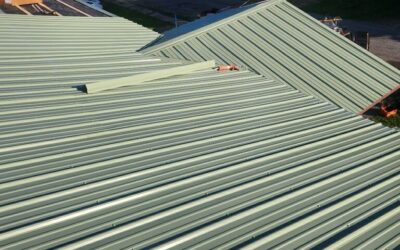Selecting the appropriate roofing nails is crucial for ensuring the durability and integrity of your shingle roof. The right nails not only secure the shingles effectively but also withstand various environmental conditions. This comprehensive guide explores the best roofing nails for shingles, covering types, sizes, materials, and best practices to assist you in making informed decisions for your roofing projects.
Types of Roofing Nails
Roofing nails come in various types, each designed for specific applications:
- Smooth Shank Nails: These nails have a smooth surface, providing a straightforward fastening solution. However, they offer less holding power compared to other types.
- Ring Shank Nails: Featuring rings along the shank, these nails offer enhanced holding power, making them suitable for areas prone to wind uplift.
- Screw Shank Nails: With a spiral design, screw shank nails provide superior holding strength, ideal for high-wind regions.

Recommended Nail Sizes for Shingles
Choosing the correct nail length is essential to ensure proper penetration into the roof deck. The general recommendations are:
- Asphalt Shingles: 1 to 1.25 inches in length.
- Wood Shingles/Shakes: 1.5 to 2 inches in length.
- Slate Shingles: 1.5 to 2 inches in length.
These lengths ensure that nails penetrate at least 3/4 inch into the wood deck, providing a secure hold. citeturn0search8
Nail Materials
The material of the nail significantly impacts its resistance to corrosion:
- Galvanized Steel Nails: Coated with zinc, these nails offer good corrosion resistance, making them suitable for most roofing applications.
- Stainless Steel Nails: Known for excellent resistance to rust and corrosion, stainless steel nails are ideal for coastal areas with salty air. citeturn0search2
- Aluminum Nails: Lightweight and resistant to corrosion, aluminum nails are less commonly used due to their lower holding power.
Nail Coatings
The coating of roofing nails plays a vital role in their longevity:
- Hot-Dipped Galvanized Nails: These nails are coated by dipping them into molten zinc, providing a thick, durable layer that resists corrosion effectively. citeturn0search0
- Electro-Galvanized Nails: Coated with a thin layer of zinc through an electroplating process, these nails offer basic corrosion resistance suitable for less demanding environments.
Building Code Requirements
Adhering to local building codes is essential:
- Gauge: Most building codes in North America require roofing nails to be at least 12-gauge, ensuring sufficient thickness and strength. citeturn0search8
- Length: Nails should be long enough to penetrate at least 3/4 inch into the roof deck, securing the shingles effectively.
Best Practices for Nail Installation
Proper nail installation is crucial for the roof’s performance:
- Placement: Nails should be placed in the nailing strip area of the shingle, typically 1 inch above the cutout, avoiding placement too high or too low to ensure proper sealing and wind resistance.
- Driving Nails: Nails should be driven flush with the shingle surface, avoiding over-driving, which can cause damage, or under-driving, which can leave the nail head exposed and affect the shingle’s sealing ability. citeturn0search1
Additional Considerations
- Environmental Factors: In coastal regions with salty air, stainless steel nails are recommended due to their superior corrosion resistance. citeturn0search2
- Manufacturer Recommendations: Always refer to the shingle manufacturer’s guidelines for specific nail requirements, as they may have particular recommendations based on the shingle type and design.
- Professional Consultation: For complex roofing projects or areas with specific environmental challenges, consulting with a professional roofer can provide tailored advice and ensure compliance with all necessary standards and codes.
By carefully selecting the appropriate nails based on type, size, material, and coating, and by following best installation practices, you can enhance the durability and performance of your shingle roof, ensuring it withstands the test of time and environmental challenges.
For a visual guide on roofing nails, you might find this video helpful:
videoComplete Guide To Roofing Nails | The Roof Storeturn0search7
 (440) 307-2060
(440) 307-2060


